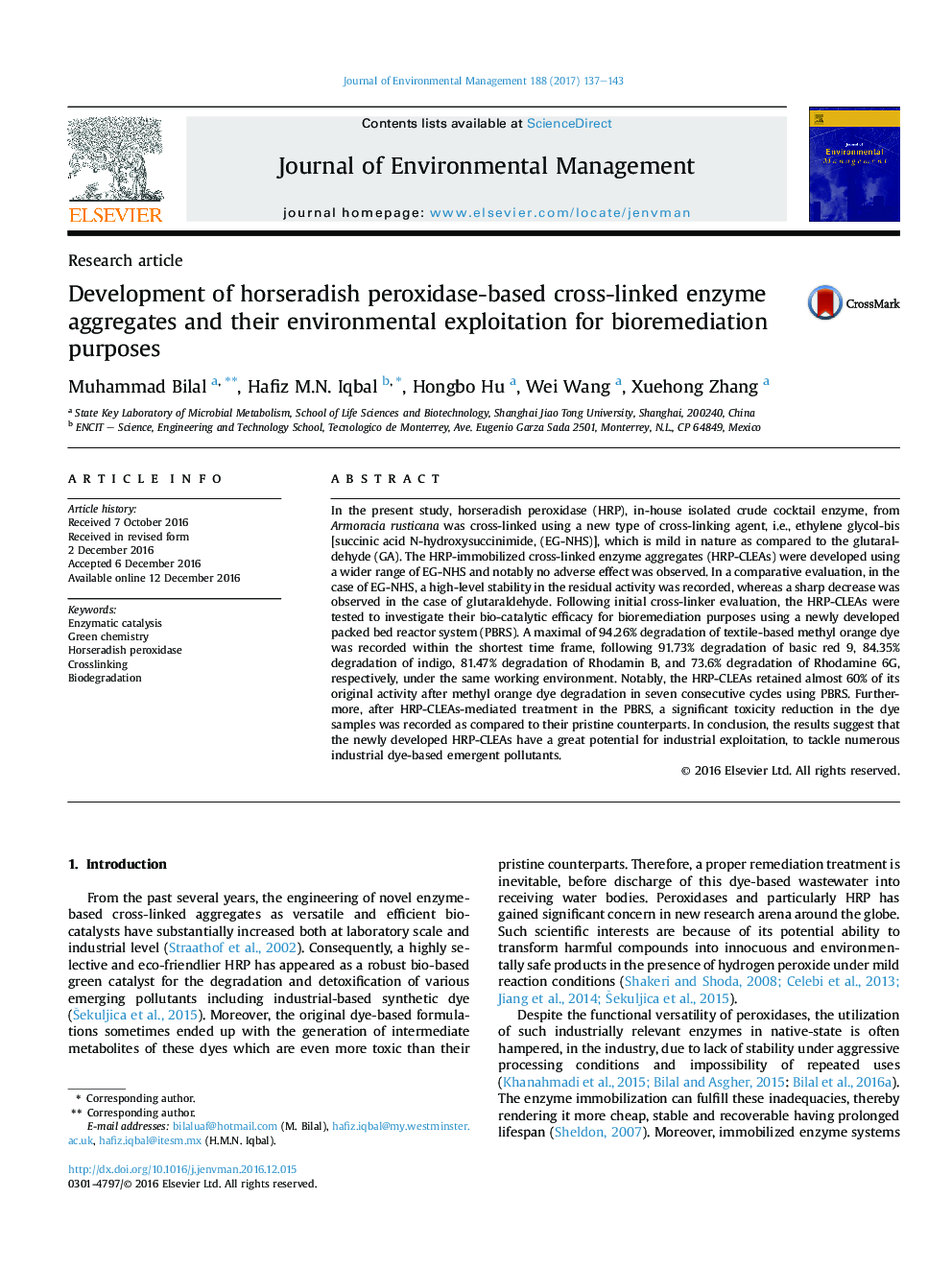| کد مقاله | کد نشریه | سال انتشار | مقاله انگلیسی | نسخه تمام متن |
|---|---|---|---|---|
| 5117131 | 1485227 | 2017 | 7 صفحه PDF | دانلود رایگان |

- An in-house isolated horseradish peroxidase was immobilized and characterized.
- A new type of cross-linking agent i.e., EG-NHS, which is mild in nature was used.
- HRP-CLEAs exhibited enhanced bio-catalytic features.
- HRP-CLEAs with novel characteristics for emerging pollutant degradation were developed.
In the present study, horseradish peroxidase (HRP), in-house isolated crude cocktail enzyme, from Armoracia rusticana was cross-linked using a new type of cross-linking agent, i.e., ethylene glycol-bis [succinic acid N-hydroxysuccinimide, (EG-NHS)], which is mild in nature as compared to the glutaraldehyde (GA). The HRP-immobilized cross-linked enzyme aggregates (HRP-CLEAs) were developed using a wider range of EG-NHS and notably no adverse effect was observed. In a comparative evaluation, in the case of EG-NHS, a high-level stability in the residual activity was recorded, whereas a sharp decrease was observed in the case of glutaraldehyde. Following initial cross-linker evaluation, the HRP-CLEAs were tested to investigate their bio-catalytic efficacy for bioremediation purposes using a newly developed packed bed reactor system (PBRS). A maximal of 94.26% degradation of textile-based methyl orange dye was recorded within the shortest time frame, following 91.73% degradation of basic red 9, 84.35% degradation of indigo, 81.47% degradation of Rhodamin B, and 73.6% degradation of Rhodamine 6G, respectively, under the same working environment. Notably, the HRP-CLEAs retained almost 60% of its original activity after methyl orange dye degradation in seven consecutive cycles using PBRS. Furthermore, after HRP-CLEAs-mediated treatment in the PBRS, a significant toxicity reduction in the dye samples was recorded as compared to their pristine counterparts. In conclusion, the results suggest that the newly developed HRP-CLEAs have a great potential for industrial exploitation, to tackle numerous industrial dye-based emergent pollutants.
Journal: Journal of Environmental Management - Volume 188, 1 March 2017, Pages 137-143